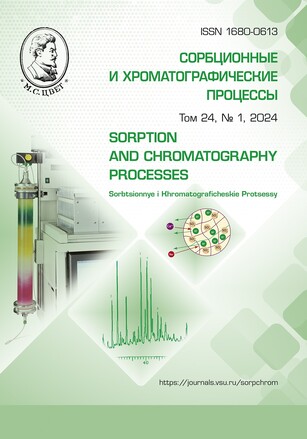Isolation of extracellular vesicles from corn leaves using differential ultracentrifugation and the identification of miR165a microRNA
Abstract
MicroRNAs are a class of non-coding RNA molecules that act as important regulators of various biological processes in plants. MicroRNAs play a significant regulatory role in the early reaction of the cell to a stressful impact, including intercellular signalling. Extracellular vesicles of plants are essential for the transport of molecules in plants. Numerous methods for isolating extracellular vesicles have been developed over the past decade, and differential centrifugation allows the isolation of small vesicles. Using the differential centrifugation method, we managed to isolate two fractions of extracellular vesicles (P40 and P100) from corn leaves that were different in size and molecular weight. The fraction of large vesicles had a size of more than 150 nm and contained high and low molecular nucleic acids.
We also determined the sizes of vesicles of the P100 fraction which contained only low molecular nucleic acids: they were from 30 to 200 nm. A specific probe was designed to identify miR165a microRNA using polymerase chain reaction. Using the stem-loop probe allowed obtaining cDNA matrices larger than 70 nucleotide pairs (bp), which was sufficient to evaluate the polymerase chain reaction (PCR). The results of RT-PCR analysis with specific primers for miR165a microRNA showed the presence of an amplification product approximately 70-80 nucleotide pairs in size, which corresponded to theoretical values. Therefore, fractions of extracellular vesicle from corn leaves contained miR165a microRNA, which may explain their physiological function as intercellular transport of small non-coding RNAs.
Downloads
References
Xu Z., Xu Y., Zhang K., Liu Y., Liang Q., Thakur A., Liu W., Yan Y. Plant-derived extracellular vesicles (PDEVs) in nanomedicine for human disease and ther-apeutic modalities. J Nanobiotechnology. 2023; 21: 114. https://doi.org/10.1186/s12951-023-01858-7
Zhou Q., Ma K., Hu H., Xing X., Huang X., Gao H. Extracellular vesicles: Their functions in plant-pathogen interac-tions. Mol Plant Pathol. 2022; 23: 760-771. https://doi.org/10.1111/mpp.13170
Kocholata M., Maly J., Martinec J., Auer Malinska H. Plant Extracellular Vesi-cles and Their Potential in Human Health Research, the Practical Approach. Physiol Res. 2022; 71: 327-339. https://doi.org/10.33549/physiolres.934886
Alfieri M., Leone A., Ambrosone A. Plant-Derived Nano and Microvesicles for Human Health and Therapeutic Potential in Nanomedicine. Pharmaceutics. 2021; 13: 498. https://doi.org/10.3390/pharmaceutics13040498
Turchinovich A., Samatov T.R., Tonevitsky A.G., Burwinkel B. Circulating miRNAs: cell–cell communication func-tion? Front. Genet. 2013; 4: 119. https://doi.org/10.3389/fgene.2013.00119
Marin-Gonzalez E, Suarez-Lopez P. "And yet it moves": cell-to-cell and long-distance signaling by plant microRNAs. Plant Sci. 2012; 196: 18-30. https://doi.org/10.1016/j.plantsci.2012.07.009
Xu D., Di K., Fan B., Wu J., Gu X., Sun Y., Khan A., Li P., Li Z. MicroRNAs in extracellular vesicles: Sorting mechanisms, diagnostic value, isolation, and detection technology. Front. Bioeng. Biotech-nol. 2022; 10: 948959. https://doi.org/10.3389/fbioe.2022.948959
Huang Y., Wang S., Cai Q., Jin H. Ef-fective methods for isolation and purifica-tion of extracellular vesicles from plants. J Integr Plant Biol. 2021; 63: 2020-2030. https://doi.org/10.1111/jipb.13181
Chomczynski P., Sacchi N. Single-step method of RNA isolation by acid guani-dinium thiocyanate-phenol-chloroform ex-traction. Analytical Biochemistry. 1987; 162: 156-159. https://doi.org/10.1006/abio.1987.9999
Fedorin D.N., Chuykova V.O., Ye-printsev A.T. Sozdaniye spetsificheskogo zonda «stebel'-petlya» dlya identifikatsii mikroRNK miR165a v list'yakh kukuruzy. Vestnik VGU. Seriya: Khimiya. Biologiya. Farmatsiya. 2023; 4: 41-47. (In Russ.)
Lakin G.F. Biometrics. M.: Higher school, 1990. 351 p. (In Russ.)
Cai Q., Halilovic L., Shi T., Chen A., He B., Wu H., Jin H. Extracellular ves-icles: cross-organismal RNA trafficking in plants, microbes, and mammalian cells. Extracell Vesicles Circ Nucleic Acids. 2023; 4: 262-282. https://doi.org/10.20517/evcna.2023.10
Cai Q., Qiao L., Wang M, He B., Lin F-M., Palmquist J., Huang S-D., Jin H. Plants send small RNAs in extracellular vesicles to fungal pathogen to silence viru-lence genes. Science. 2018; 360: 1126-1129. https://doi.org/10.1126/science.aar4142
Karimi H.Z., Baldrich P., Rutter B.D., Borniego L., Zajt K.K., Meyers B.C., Innes R.W. Arabidopsis apoplastic fluid contains sRNA- and circular RNA–protein complexes that are located outside extra-cellular vesicles. The Plant Cell. 2022; 34: 1863-1881. https://doi.org/10.1093/plcell/koac043
Rutter B.D., Innes R.W. Extracellu-lar Vesicles Isolated from the Leaf Apo-plast Carry Stress-Response Proteins. Plant Physiology. 2017; 173: 728-741. https://doi.org/10.1104/pp.16.01253
Yan Y., Ham B-K. The Mobile Small RNAs: Important Messengers for Long-Distance Communication in Plants. Front Plant Sci. 2022; 13: 928729. https://doi.org/10.3389/fpls.2022.928729







